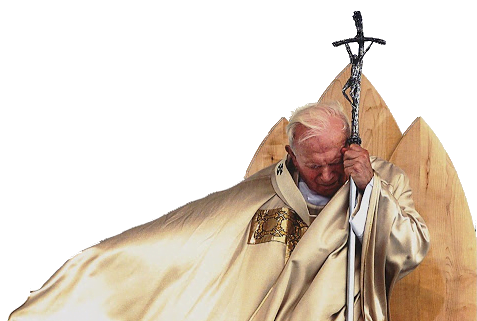
When I think of the Solemnity of the Most Holy Trinity, I am reminded of an old African folk tale that speaks of three blind men who examine an elephant to try to determine what sort of animal it might be. One grabs hold of the elephant’s tail and exclaims, “This creature is very much like a rope.” The second man runs his hand over one of the tusks, declaring, “This creature is very much like a spear.” Finally, the third man, patting the wide, solid side of the elephant, says, “This creature is very much like a wall.” Individually, each of the blind men grasps an aspect of the majestic creature, but their understanding is limited. But, by sharing their insights, they are given an understanding of elephants that none of them could have had alone.
Like the experience of these three men, all the Church’s various celebrations throughout the year work together to help us enter more deeply into the mysteries of salvation and the ways that God has been, and continues to be, at work in the world. This Sunday’s celebration honoring the Most Holy Trinity is no exception.
This special day honoring the Holy Trinity was, however, a fairly late addition to the Church’s cycle of seasons and feasts. In fact, Pope Alexander II (1061-1073) is said to have objected to having a special day to honor the Holy Trinity because, as he observed, the Holy Trinity is celebrated every Sunday and every day in the Church’s prayer. It wasn’t until 1334 that Pope John XXII made the Feast of the Holy Trinity part of the official liturgy of the Universal Church.
Falling as it does on the Sunday after Pentecost, this day honoring the Trinity brings together all the mysteries that we have been celebrating during the seasons of Lent and Easter: the creative, saving, and sanctifying work of God that not only frees us from the powers of sin and death, but also unites us as a community of faith, the Church.
The Preface for this celebration helps us to understand that the communion of love, a “Trinity in unity”, defines our experience of the inner life of God:
For with your Only Begotten Son and the Holy Spirit, you are one God, one Lord, not in the unity of a single person, but in a Trinity of one substance. For what you have revealed to us of your glory we believe equally of your Son and of the Holy Spirit, so that, in the confession of the true and eternal Godhead, you might be adored in what is proper to each Person, their unity in substance, and their equality in majesty.
This important liturgical text invites us to consider how our own relationships are reflections of that unique and dynamic communion that exists within God—the Father, the Son, and the Holy Spirit. By grace, we are constantly being invited to be part of that relationship, to live in the love of God.
Henri Nouwen explored this idea in his book Sabbatical Journey, when he wrote: “I am deeply convinced that most human suffering comes from broken relationships. Anger, jealousy, resentment, and feelings of rejection all find their source in conflict between people who yearn for unity, community, and a deep sense of belonging. By claiming the Holy Trinity as home for our relational lives, we claim the truth that God gives us what we most desire and offers us the grace to forgive each other for not being perfect in love.”
In the end, our celebration of Trinity Sunday is an invitation for us to continue to move beyond ourselves and our own sense of “mine.” God continues to bless us—in the ongoing act of creation, in the freely given gifts of healing and redemption of Christ, and the life-giving Spirit that inspires faith, hope, and love—and invites us to receive the graces and gifts he so freely gives. We are called to extend that invitation to others by sharing what we have received.
“The mystery of the Trinity also speaks to us of ourselves, of our relationship with the Father, the Son and the Holy Spirit. In fact, through baptism, the Holy Spirit has placed us in the heart and the very life of God, who is a communion of love. God is a ‘family’ of three Persons who love each other so much as to form a single whole. This ‘divine family’ is not closed in on itself but is open. It communicates itself in creation and in history and has entered into the world of men to call everyone to form part of it … Our being created in the image and likeness of God. Communion calls us to understand ourselves as beings-in-relationship and to live interpersonal relations in solidarity and mutual love.” (Pope Francis)
May God Bless You and Grant You His Peace!

